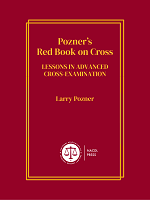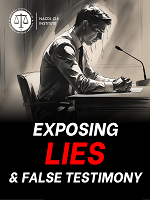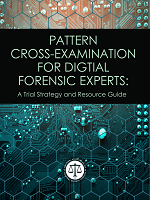Summary
New York has a statute requiring recording of custodial interrogations.
Statute
Citation: N.Y. Crim. Proc. Law § 60.45 (McKinney) (2018).
General Rule
New York requires law enforcement to make video recordings of custodial interrogations that take place in detention facilities where the interrogations involve class A-1 felonies.
Exceptions
In New York, law enforcement is not required to make video recordings of custodial interrogations if: the recording equipment malfunctions; the recording equipment is not available because it is being otherwise used; statements are made in response to questions that are routinely asked during arrest processing; statements by the suspect are made spontaneously; the statement is made during an interrogation that is conducted when the interviewer is unaware that a qualifying offense has occurred; the suspect refuses to participate in a recorded interrogation; law enforcement reasonably believes that recording the interrogations would jeopardize the safety of any person or reveal the identity of a confidential informant; or the statement is made at a location not equipped with a video recording device and the reason for using that location is not to subvert the intent of the law. § 60.45.
Consequences for failing to record
Where law enforcement failed to record a custodial interrogation related to a class A-1 felony, “the court shall consider the failure to record as a factor, but not as the sole factor . . . in determining whether . . . [the] statement shall be admissible.” § 60.45(b). Where the court admits evidence from an unrecorded custodial interrogation, “upon request of the defendant, the court must instruct the jury that the people’s failure to record the defendant’s confession, admission or other statement . . . may be weighed as a factor, but not as the sole factor, in determining whether such confession, admission or other statement was voluntarily made, or was made at all.” § 60.45(d).
Cases
In People v. Durant, 26 N.Y.3d 341, 353-54, 44 N.E.3d 173, 182-83 (2015), the Court of Appeals held that the trial court is not required to give a cautionary “adverse inference” jury instruction in every case in which the police could have, but failed to, make an electronic recording of a custodial interrogation. However, in dicta the Court emphasized the value of electronic recordings when the equipment is available:
Finally, while we do not adopt defendant’s proposal to issue a judicial mandate for adverse inference instructions in all cases involving the failure to record interrogations, we recognize the broad consensus that electronic recording of interrogations has tremendous value, and we note the commendable efforts of the bar, the judiciary and the Legislature to address the complexities of this relatively new frontier of the criminal justice system. Certainly, there is widespread agreement that electronic recording of custodial interrogations promotes the fair administration of justice. Because an electronic recording of a custodial interrogation yields a reliable, objective record of the police’s interview with a defendant, the recording ensures that the jury at the defendant’s trial may evaluate every aspect of the defendant’s demeanor, his or her statement and his or her treatment at the hands of the police, thereby enabling the jury to make a fully informed determination of the voluntariness and meaning of the defendant’s statement. Importantly, according to experts and stakeholders in the field of criminal justice, recordings can reveal circumstances that may have prompted suspects to make false confessions, which are a leading cause of wrongful convictions (see New York State Bar Association’s Task Force on Wrongful Convictions, Final Report at 6 [April 2009] [available at https://www.nysba.org/wrongful-convictions/, last visited 11/4/15]; see also Steven A. Drizin and Marissa J. Reich, Heeding the Lessons of History: The Need for Mandatory Recording of Police Interrogations to Accurately Assess the Reliability and Voluntariness of Confessions, 52 Drake L Rev 619, 622-624 [2004]).
Fortunately, in recognition of those widely- acknowledged benefits of recording interrogations and the need for a legal framework governing this area, stakeholders in the criminal justice system and government have come together to begin addressing this critical issue. Many bar groups, district attorneys, defense lawyers, judicial task force members and legislators have already crafted worthy proposals to balance various policy interests and create what, in their judgment, is a fair, practical and enduring framework for electronic recording of interrogations (see e.g. New York State Justice Task Force, Recommendations Regarding Electronic Recording of Custodial Interrogations at 3-4 [2012] [available at http://www.nyjusticetaskforce.com/ElectronicRecordingOfCustodialInterrogations.pdf, last visited 11/4/15]; Steven Banks, The Legal Aid Society, Testimony Before the Council of the City of New York at 7-10 [Feb 12, 2013] [available at http://www.legal-aid.org/media/171367/2013.02.12.pdf, last visited 11/4/15]; District Attorneys Association of the State of New York, New York State Guidelines for Recording Custodial Interrogations of Suspects at 1-8 [2010] [available at http://www.daasny.com/wp-content/uploads/2014/08/Video-Recording-Interrogation-Procedures-Custodial-FINAL-12-8-10.pdf, last visited 11/4/15). The Legislature is currently considering the enactment of laws based on the important work of those stakeholders (see 2015 NY Senate Bill S2419; 2015 NY Assembly Bill A7063). By drawing policy-based lines that need not follow the open-ended logic of defendant in this case, the Legislature can craft legal principles governing recording and adverse inference charges that realize all of the benefits, and none of the drawbacks, of defendant’s proposed judicial rule-making. Consequently, in the absence of existing law compelling a trial court to issue an adverse inference charge in every case in which the police have failed to take available measures to record an interrogation, we leave it to the Legislature to consider whether or not to change the law on this particular issue.
In a concurring opinion, the Chief Judge wrote (26 N.Y.3d 341, 355-57, 44 N.E.3d 173, 183-84):
I agree with the majority that the trial court did not abuse its discretion as a matter of law by denying defendant’s request for an adverse inference instruction based on the failure of the police to electronically record his interrogation. I further agree that there is currently no requirement that such instructions need be given in all cases where a recording was not made. However, I write separately to emphasize that things have changed in many respects since defendant was questioned by the police in 2008. Technology has advanced and significant resources have been expended to equip law enforcement with the ability to video interrogations in the effort to increase transparency and prevent wrongful convictions. Indeed, the overwhelming national trend is toward requiring video recording of custodial interrogation of suspects, either as a matter of a State’s duty of fairness or to protect the rights of defendants. Therefore, going forward, trial courts should give serious consideration as to whether adverse inference charges are indicated and, at least in cases involving serious felonies, it may well be that the grant of a defendant’s request and the delivery of the charge is, as a matter of law, the only appropriate course.
The many benefits of recording custodial interrogations are essentially uncontested. The practice holds significant advantages for the entire criminal justice system. First and foremost, recording interrogations reduces the instances of false confessions and, by extension, wrongful convictions. A video recording of the entire proceeding can also obviate any claim that a suspect’s confession has been obtained through improper police tactics. The jury’s ability to see exactly what transpired during an interrogation will improve the accuracy of the fact- finding process and facilitate appellate review. The increased transparency will also promote public confidence in the administration of justice. As the majority observes, there is no dispute that the recording of interrogations is the better practice (see majority op. at 2).
In accordance with the national trend, courts in other states have grappled with the absence of recorded statements and, in the face of legislative inaction, have drawn upon their supervisory authority to fashion remedies. For instance, New Jersey’s high court established a committee to study and make recommendations on the electronic recording of interrogations (see State v Cook, 179 NJ 533, 847 A2d 530 [2004] and ultimately adopted a rule, generally requiring electronic recording of interrogations that are conducted in police stations or other ‘places of detention,’ for individuals who are charged with serious felonies (see New Jersey Rules Governing Criminal Practice R 3:17; see also Ind R Evid 617). The failure to record allows the trial court to consider whether the statement should be admissible and is a factor for the jury to consider in determining whether the statement was actually made and, if so, what weight it should be accorded (rule 3:17 [d]; see also Ark R Crim P 4.7). Where the statement was not recorded, the defendant is entitled to a cautionary instruction upon request (see Rule 3:17 [e]).
The Massachusetts Supreme Court has similarly determined that a cautionary jury instruction is appropriate at a defendant’s request, where the prosecution introduces evidence of an unrecorded custodial interrogation (see Commonwealth v DiGiambattista, 442 Mass 423, 447, 813 NE2d 516, 533 [2004]). The instruction advises the jury ‘that the State’s highest court has expressed a preference that such interrogations be recorded whenever practicable, and caution [s them] that, because of the absence of any recording of the interrogation in the case before them, they should weigh evidence of the defendant’s alleged statement with great caution and care’ (442 Mass at 447-448, 813 NE2d at 533-534).
Other state high courts have determined, also in the exercise of their supervisory authority, that custodial interrogations must be recorded and that the failure to do so can result in the suppression of the statement at trial (see State v Scales, 518 NW2d 587, 592 [Minn 1994]; In re Jerrell C.J., 283 Wis 2d 145, 172, 699 NW2d 110, 123 [2005] [applicable only to juveniles, but the Wisconsin Legislature subsequently enacted separate legislation providing for a jury instruction for felony suspects (Wis Stat Ann §§ 968.073, 972.115)]. Finally, Alaska has held that it is a state due process violation for law enforcers to fail to record a custodial interrogation, where such recording is feasible (see Stephan v State, 711 P2d 1156, 1159 [Alaska 1985]).
Despite the availability of these types of remedies in states as diverse as Alaska and Arkansas, there is currently no such measure in place in New York. However, electronic recording only becomes easier all the time and there is no legitimate argument why this best practice should not become universal in the interest of a fair and impartial justice system. Looking ahead, then, when a law enforcement agency has the capability, but fails to create a video record of a custodial interrogation, a judicial response will be warranted.
People v. Thomas, 22 N.Y.3d 629, 646, 8 N.E.3d 308, 316-17 (2014), provides an example of how a videotaped interrogation can lead to a result that would have been unlikely without a recording. The Court of Appeals unanimously ruled that a confession resulting from a 9 ½ hour videotaped statement taken from the father of a deceased four month old baby should have been suppressed, and a new trial held. The Court said:
Defendant’s inculpating statements were also inadmissible as ‘involuntary made’ within the meaning of CPL [Criminal Procedure Law] 60.45.(2) (i). The various misrepresentations and false assurances used to elicit and shape defendant’s admissions manifestly raised a substantial risk or false incrimination…Every scenario of trauma induced head injury equal to explaining the infant’s symptoms was suggested to defendant by his interrogators. Indeed, there is not a single inculpatory fact in defendant’s confession that was not suggested to him.













